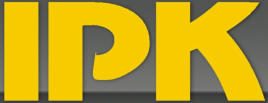

.



IPK London is a personal site, any software downloaded from here can be used but at your own
risk. I accept no responsibility for any misfortune you may have.

Why DMR?
DMR (Digital Mobile Radio) was originally for Business but has been adapted for use on the Amateur Bands. It is an open
standard using TDMA (Time Division Multiple Access) as its mode of transmission and is fully digital throughout the transmission
path, including network switches, repeaters and radio handsets.
It uses what are known as two timeslots, Timeslot one will transmit for 30 milliseconds then rest for 30 milliseconds then transmit
for a further 30 milliseconds and so on. But none of the voice contact is dropped in this process, you’ll still hear it as it is spoken.
That will also be the same for Timeslot two, confused? Don’t be, trust me you’ll get used to it believe me, there are many video’s
out there that explain the whole process. I regard DMR second in the list of Digital modes, behind C4FM but ahead of Dstar for
clarity, although Dstar is certainly the busiest.
There are currently two versions of DMR, these being Phoenix and Brandmeister, there is a sort of North/South divide with
Phoenix being active down South and Brandmeister up North, although saying that, the new Romford repeater is Brandmeister.
DMR uses a thing called a Colour Code on it’s repeaters which has absolutely nothing to do with colour whatsoever, it’s like
colour code 1 or colour code 2 etc, Colour codes being like a digital CTCSS for the repeater. DMR repeaters are fairly
widespread across the UK but watch out for Brandmeister of Phoenix because radio programming is that little bit different. I’ve
added a working Codeplug below that covers Phoenix and Brandmeister, hope it helps, however if you should encounter any
problem using it I accept no liability whatsoever (not that you should get a problem) except that the codeplug is for a TYT MD380
or Retevis RT3


How it works.








Why DMR?
DMR (Digital Mobile Radio) was originally
for Business but has been adapted for use
on the Amateur Bands. It is an open
standard using TDMA (Time Division
Multiple Access) as its mode of transmission
and is fully digital throughout the
transmission path, including network
switches, repeaters and radio handsets.
It uses what are known as two timeslots,
Timeslot one will transmit for 30 milliseconds
then rest for 30 milliseconds then transmit
for a further 30 milliseconds and so on. But
none of the voice contact is dropped in this
process, you’ll still hear it as it is spoken.
That will also be the same for Timeslot two,
confused? Don’t be, trust me you’ll get used
to it believe me, there are many video’s out
there that explain the whole process. I
regard DMR second in the list of Digital
modes, behind C4FM but ahead of Dstar for
clarity, although Dstar is certainly the
busiest.
There are currently two versions of DMR,
these being Phoenix and Brandmeister,
there is a sort of North/South divide with
Phoenix being active down South and
Brandmeister up North, although saying
that, the new Romford repeater is
Brandmeister. DMR uses a thing called a
Colour Code on it’s repeaters which has
absolutely nothing to do with colour
whatsoever, it’s like colour code 1 or colour
code 2 etc, Colour codes being like a digital
CTCSS for the repeater. DMR repeaters are
fairly widespread across the UK but watch
out for Brandmeister of Phoenix because
radio programming is that little bit different.
I’ve added a working Codeplug below that
covers Phoenix and Brandmeister, hope it
helps, however if you should encounter any
problem using it I accept no liability
whatsoever (not that you should get a
problem) except that the codeplug is for a
TYT MD380 or Retevis RT3


How it works.
















